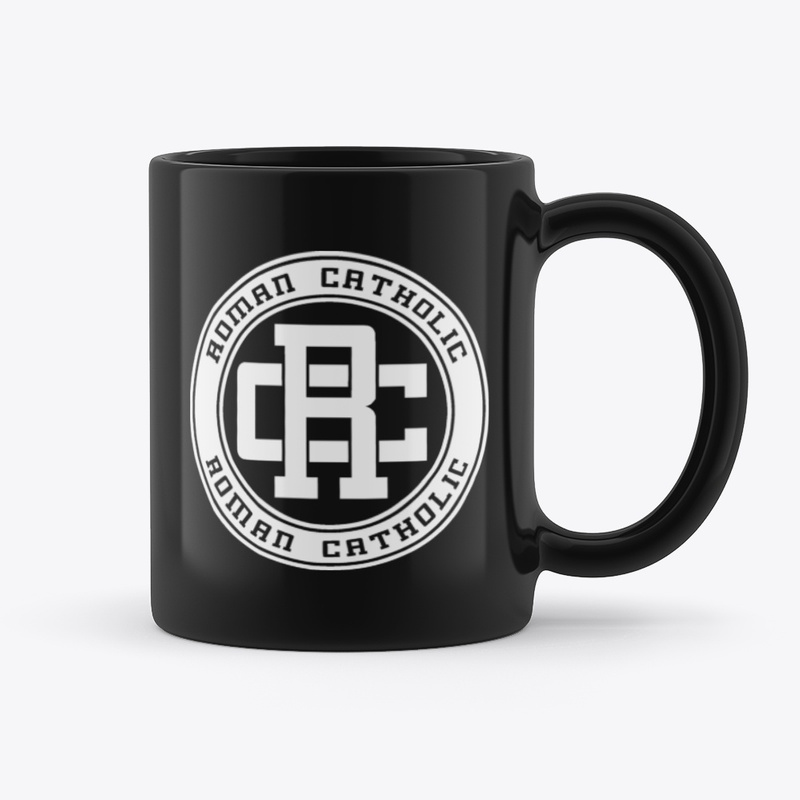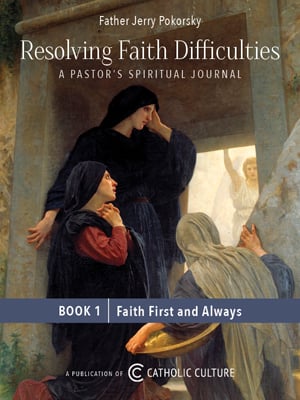Catholicism and sanctity: Jumping to the bottom line
By Dr. Jeff Mirus ( bio - articles - email ) | Nov 30, 2021 | In Reviews
It is amazing how often people speak and write about Catholicism without remembering the holiness that pulses in the very center of the Church, radiating out from the Eucharist into countless souls. After all, among all those who claim the name Catholic—that is within this entire visible body of redeemed sinners—the only difference that matters is whether they choose to become truly Catholic in response to this Christic grace that is communicated continuously through all the sacraments. The difference that matters, in other words, is whether or not they (and we) become saints.
Recently I discovered two brilliantly simple books that make that essential difference exceedingly clear, in ways that can help any of us along the road to union with God.
Truth and holiness
Brant Pitre offers us a new volume of authentically Catholic spiritual direction, published by Image books (a famous major imprint originating with Doubleday, but now part of Random House—itself part of Penguin-Random House). As you may recall from other books I have reviewed by Pitre (simply enter his name in our search tool in the upper right corner of our web pages), this highly-accessible Catholic author excels in his grasp of the Jewish underpinnings of Catholicism, enabling him to shed considerable fresh light on our understanding of Christ, Mary, and many Catholic topics, including prayer and spiritual growth.
In Introduction to the Spiritual Life: Walking the Path of Prayer with Jesus, Pitre explains prayer (vocal prayer, meditation, and contemplation), surveys the general path of spiritual growth, explores the major vices and their corresponding virtues, and discerns what it really means to make spiritual progress. To offer a taste, the last section covers:
- Examination of Heart
- Lectio Divina and Jacob’s Ladder
- The Battle of Prayer
- The Dark Night
- The Living Water
Each chapter presents rock-solid principles of authentic Catholic spirituality as Pitre proceeds clearly through three stages: (1) Exploring the topic in Jewish Scripture; (2) Illustrating it in the life of Christ; and (3) Explaining it more systematically through the Catholic spiritual tradition. The treatment is in each case brief, clear, remarkably rich and spiritually deep.
How we die
What affluent moderns so often forget is that all the wishful thinking in the world cannot conquer death. No matter how we maximize the delights of wealth, ease, labor-saving devices and distracting entertainments, we would all do better to recognize our tendency to ignore the elephant in the room. We ought to contemplate our ultimate end, which is always and inescapably determined at our death. That’s the beauty of a new book from Ignatius Press, translated from the work of the Italian author Antonio Maria Sicari, OCD: How Saints Die: 100 Stories of Hope.
The introduction to Fr. Sicari’s book, entitled “Death, Love, Holiness”, nicely highlights what we might wish to call the astonishing gaps—or perhaps fissures or even chasms—in our modern worldview. Then, in a series of remarkably deft biographical sketches, the author traces the lives of saints who have died as martyrs, died of love, died of ecclesial passion, of maternal charity, of paternal charity, of apostolic toil—culminating in men and women who were known for dying innocent and, well, for “dying as saints”.
There are, on average, 12.5 saints in each category (which suggests that averages have their drawbacks). You may wish to guess how Fr. Sicari has classified saints as diverse as Gianna Beretta Molla, Thomas More, Kateri Tekakwitha, Francis of Assisi, Thomas Aquinas, Elizabeth Ann Seton, Vincent de Paul, and Catherine Labouré (to take one from each category). But of course, most of the one hundred saints in this collection could have been placed in more than one section. Each brief biography is between one and two pages long, but despite the brevity, Fr. Sicari does far more than provide a mere “liturgical day” type of summary. He sees clearly the essence of what enabled each of these saints to die well.
Sanctity
If the contemplation of the four last things—death, judgment, heaven and hell—does not press us toward a deeply Catholic outlook on life, it is doubtful that anything can do so short of a spontaneously grateful participation in Divine love. Fortunately, that possibility remains up to the point of death, and it typically requires very little more than a genuine humility. We must all recognize our extreme human poverty, a poverty that can be eliminated only by a Divine gift.
It is not necessary to be a deep-thinking Catholic to receive such a gift, but it is necessary to avoid the pretense of deep thought occasioned by becoming a pseudo-Catholic. Once again, the soil in which our receptivity grows is humility, a virtue typically honored in the breach in our culture. And quite often, where we naively expect spiritual counsel, blind guides lead us straight into the proverbial ditch. So read Sicari’s series of saints for inspiration, read Pitre’s chapters on spiritual growth for instruction—and may we all avoid becoming part of a distressing collection of cautionary tales.
Brant Pitre, Introduction to the Spiritual Life: Walking the Path of Prayer with Jesus: Image, 2021. Hardback 312pp. $27.00 (also available as an ebook)
Antonio Maria Sicari, OCD, How Saints Die: 100 Stories of Hope: Ignatius Press, 2021. Paper 234pp. $13.46 (ebook $7.18)
All comments are moderated. To lighten our editing burden, only current donors are allowed to Sound Off. If you are a current donor, log in to see the comment form; otherwise please support our work, and Sound Off!








